
Leucopogon obovatus is a species of flowering plant in the heath family Ericaceae and is endemic to the southwest of Western Australia. It is an erect shrub with hairy young branchlets, variably-shaped, simple leaves, and erect clusters of 3 to 15 white, bell-shaped flowers on the ends of branches and in upper leaf axils.
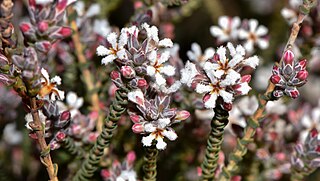
Leucopogon sprengelioides is a species of flowering plant in the family Ericaceae, and is endemic to the south-west of Western Australia. It is an erect shrub with stem-clasping, egg-shaped or lance-shaped leaves and short, dense spikes of white, tube-shaped flowers.

Leucopogon pulchellus, commonly known as beard-heath, is a species of flowering plant in the family Ericaceae, and is endemic to the south west of Western Australia. It is an erect or straggling shrub with erect, linear leaves and short, dense spikes of white, tube-shaped flowers.

Styphelia planifolia is a species of flowering plant in the heath family Ericaceae and is endemic to the south-west of Western Australia. It is a bushy shrub with narrowly oblong or lance-shaped leaves with a small, sharp point on the tip, and white, tube-shaped flowers.
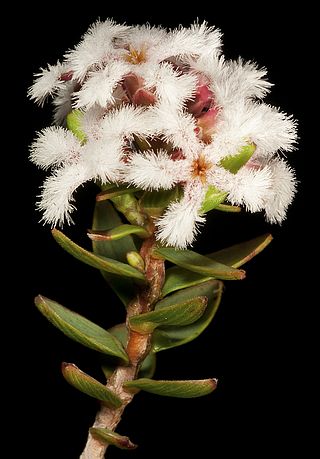
Leucopogon polymorphus is a species of flowering plant in the heath family Ericaceae and is endemic to near-coastal areas of south-western Western Australia. It is a shrub with egg-shaped to lance-shaped or almost linear leaves and short, dense spines of white, tube-shaped flowers.
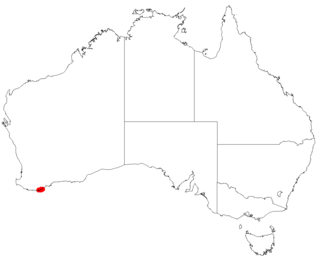
Leucopogon altissimus is a species of flowering plant in the heath family Ericaceae and is endemic to a restricted area in the south of Western Australia. It is a tall, erect shrub with glabrous branchlets, elliptic leaves and white or creamy-white flowers in groups in upper leaf axils or on the ends of branches.
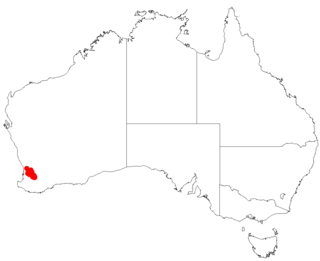
Leucopogon darlingensis is a species of flowering plant in the heath family Ericaceae and is endemic to the south-west of Western Australia. It is an erect shrub with hairy young branchlets, spirally arranged, linear, oblong, narrowly elliptic or narrowly egg-shaped leaves and white, bell-shaped flowers arranged in upper leaf axils and at the ends of branches.

Leucopogon diversifolius is a species of flowering plant in the heath family Ericaceae and is endemic to the south-west of Western Australia. It is an erect shrub with more or less glabrous young branchlets, spirally arranged, erect, broadly egg-shaped, elliptic or more or less circular leaves, and white, broadly bell-shaped flowers sometimes with a pink tinge.
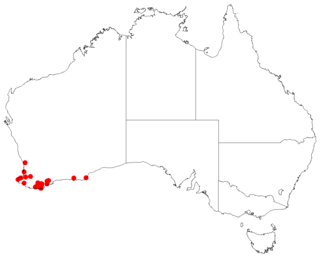
Leucopogon elatior is a species of flowering plant in the heath family Ericaceae and is endemic to the south-west of Western Australia. It is a slender, erect or straggly shrub with broadly egg-shaped leaves, and white, tube-shaped flowers.

Leucopogon flavescens is a species of flowering plant in the heath family Ericaceae and is endemic to the south-west of Western Australia. It is a shrub with oblong leaves and white, tube-shaped flowers that are densely bearded on the inside.
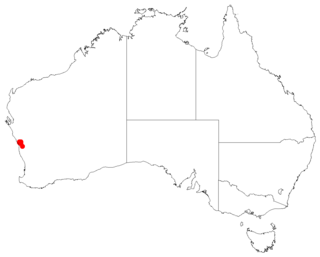
Leucopogon grammatus is a species of flowering plant in the heath family Ericaceae and is endemic to the south-west of Western Australia. It is an erect shrub with hairy young branchlets, spirally arranged, erect, egg-shaped leaves, and white, bell-shaped to broadly bell-shaped flowers.
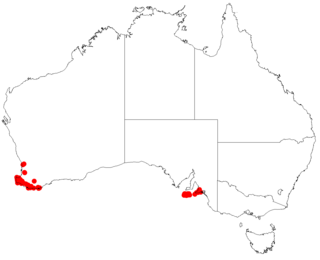
Leucopogon hirsutus is a species of flowering plant in the heath family Ericaceae and is endemic to southern continental Australia. It is a low-lying or straggling shrub with elliptic to oblong leaves and inconspicuous, white, bell-shaped flowers.

Conostephium preissii is a species of flowering plant in the family Ericaceae and is endemic to the southwest of Western Australia. It is an erect shrub with many stems, egg-shaped to oblong leaves and white and purplish to reddish-pink flowers.

Leucopogon obtusatus is a species of flowering plant in the heath family Ericaceae and is endemic to the south-west of Western Australia. It is an erect shrub that typically grows to a height of 0.25–1 m. Its leaves are sessile, egg-shaped to oblong, overlap each other and are about 2 mm (0.079 in) long. The flowers are arranged in short, dense spikes on the ends of branches or in upper leaf axils with leaf-like bracts and broad bracteoles less than half as long as the sepals. The sepals are about 2 mm (0.079 in) long, the petals about 4 mm (0.16 in) long and joined at the base, the lobes shorter than the petal tube.

Leucopogon oppositifolius is a species of flowering plant in the heath family Ericaceae and is endemic to the south of Western Australia. It is a slender, erect to spreading shrub that typically grows to a height of 15–80 cm (5.9–31.5 in). Its leaves are arranged in opposite pairs, narrowly linear to narrowly lance-shaped and 2–4 mm (0.079–0.157 in) long. The flowers are arranged in short spikes on the ends of branches with leaf-like bracts and narrow bracteoles about half as long as the sepals. The sepals are about 2 mm (0.079 in) long and lance-shaped, the petals about 4 mm (0.16 in) long and joined at the base, the lobes about the same length as the petal tube. Flowering mainly occurs from July to December.
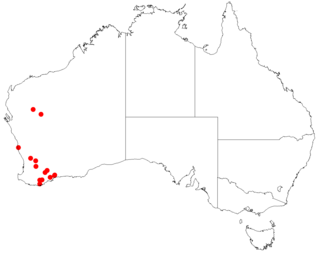
Leucopogon ovalifolius is a species of flowering plant in the heath family Ericaceae and is endemic to the south-west of Western Australia. It is an erect or straggling shrub that typically grows to a height of 1–2 ft (0.30–0.61 m). Its leaves are egg-shaped with the narrower end towards the base, 4.2–6.3 mm (0.17–0.25 in) long and sessile. The flowers are arranged in pairs or threes in leaf axils on a short peduncle with tiny bracts, and bracteoles less than half as long as the sepals. The sepals are about 2 mm (0.079 in) long, the petals 4.2–5.3 mm (0.17–0.21 in) long and joined at the base, the lobes longer than the petal tube.
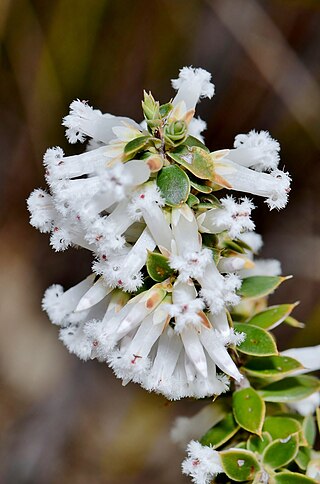
Leucopogon oxycedrus is a species of flowering plant in the heath family Ericaceae and is endemic to the south-west of Western Australia. It is an erect shrub with variably-shaped leaves with a small, sharp point on the tip, and white, pink or red, tube-shaped flowers.

Leucopogon prolatus is a species of flowering plant in the heath family Ericaceae and is endemic to the south-west of Western Australia. It is an erect, open shrub with a single stem at ground level, egg-shaped to elliptic leaves and erect clusters of 3 to 14 white flowers on the ends of branches and short side-branches.
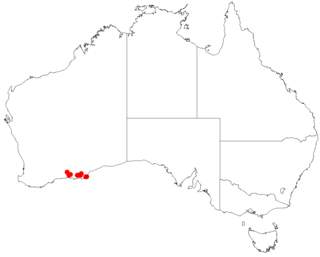
Leucopogon remotus is a species of flowering plant in the heath family Ericaceae and is endemic to the south-west of Western Australia. It is an erect shrub with a single stem at ground level, narrowly egg-shaped to egg-shaped leaves and erect clusters of 4 to 11 white, tube-shaped flowers usually on the ends of branches.
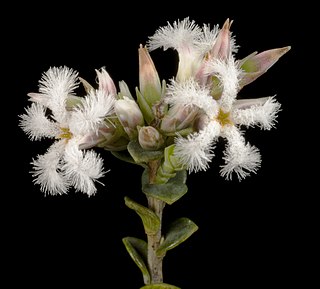
Leucopogon squarrosus is a species of flowering plant in the heath family Ericaceae and is endemic to the southwest of Western Australia. It is an erect shrub with hairy young branchlets, egg-shaped or elliptic leaves and dense, erect clusters of 5 to 14 white flowers on the ends of branches and in upper leaf axils.





















